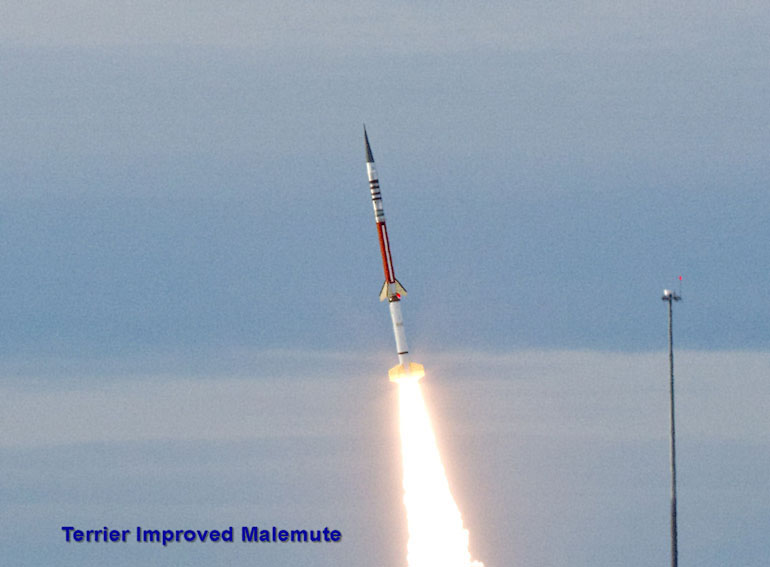UHCC Project Imua Payload: PrIME
RockSat-X 2016
Honolulu—Kapi‘olani—Kaua‘i—Windward Community College
Hawai‘i Space Grant Consortium
Project Imua Mission 2 involved the development of a small payload named PrIME ("Project Imua Multiple Experiment") that carried a sublimation rocket that was deployed at apogee and a neutron-gamma ray detector, along with video cameras and IMU detectors. This Mission participated in RockSat-X 2016. PrIME was launched into space on a sub-orbital trajectory from NASA Wallops Flight Facility in Virginia in August 2016. Despite the successful launch, the payload was lost in the Altantic recovery area.
The payload carried a gamma ray detector that measured thermal neutrons emitted by solar flares as well as secondary neutrons reflected off the earth’s upper atmosphere by cosmic rays and solar protons. This detector was designed and built by the KauaiCC team.
PrIME also included an innovatively powered rocket that was deployed from the payload deck near apogee. Designed by the WindwardCC team, this rocket, which was nicknamed ScubeR (Super Simple Sublimation Rocket) for its motor’s simplicity in the use of a subliming naphthalene propellant, was fabricated on a 3D printer. Sublimation is the process whereby solid substances change directly into the gaseous state. Perhaps the most familiar of such substances is dry ice. Naphthalene, the chemical used in moth balls, is another.
The following NASA videos gives a summary of Mission 2's preparation and launch at Wallops Flight Facility.
In order to record ScubeR’s flight parameters, PrIME was outfitted with four cameras. KauaiCC designed two miniature out-board cameras that were mounted on ScubeR’s nosecone and transmit data via Wi-Fi to an on-board receiver. In addition, the Honolulu CC team configured two on-board Mobius Action cameras--one of which recorded video, the other still pictures. The Honolulu team also selected an advanced 9-axis motion tracker to record g-forces. This VectorNav VN-100 device included a barometric pressure sensor to assist in the post analysis of the efficiency of ScubeR’s sublimation propellant.


The Kapiolani CC team was responsible for developing the payload’s interface and Ninja boards for power and data processing as well as the housing for these circuits. The Kapiolani team also designed a thermocouple sensor, which in tandem with the pressure gauge will provide environmental data for analyzing ScubeR’s performance. The Windward team is further responsible for integrating all subsystems and conducting the pre-flight g-force tests, including spin and vibration.
Virtual Reality 360 Views of Payload
ScubeR (horizontal orientation)
ScubeR (vertical orientation)
PrIME with ScubeR attached
PrIME after ScubeR is released
Payload specs:
Dimension of Housing: approximately 10.75" x 11" x 4.5"
Weight with baseplate: 15.1 lbs
Material: aluminum 6061, teflon and lead ballast
Instruments:
• ScubeR — sublimation rocket (WinCC) with nosecose Hammerhead cameras (KauCC)
Dimensions: 19.5 cm long by 4 cm in diameter; Weight: 247.4 g with naphthalene propellant
• Mobius Video and Still Cameras (HonCC)
• IMU [9-axis motion detector with pressure device] (HonCC)
• Thermocouple (KapCC)
• Neutron-Gamma Ray Detector (KauCC)
Name: PrIME
• acronym for "Project Imua Multiple Experiment”


